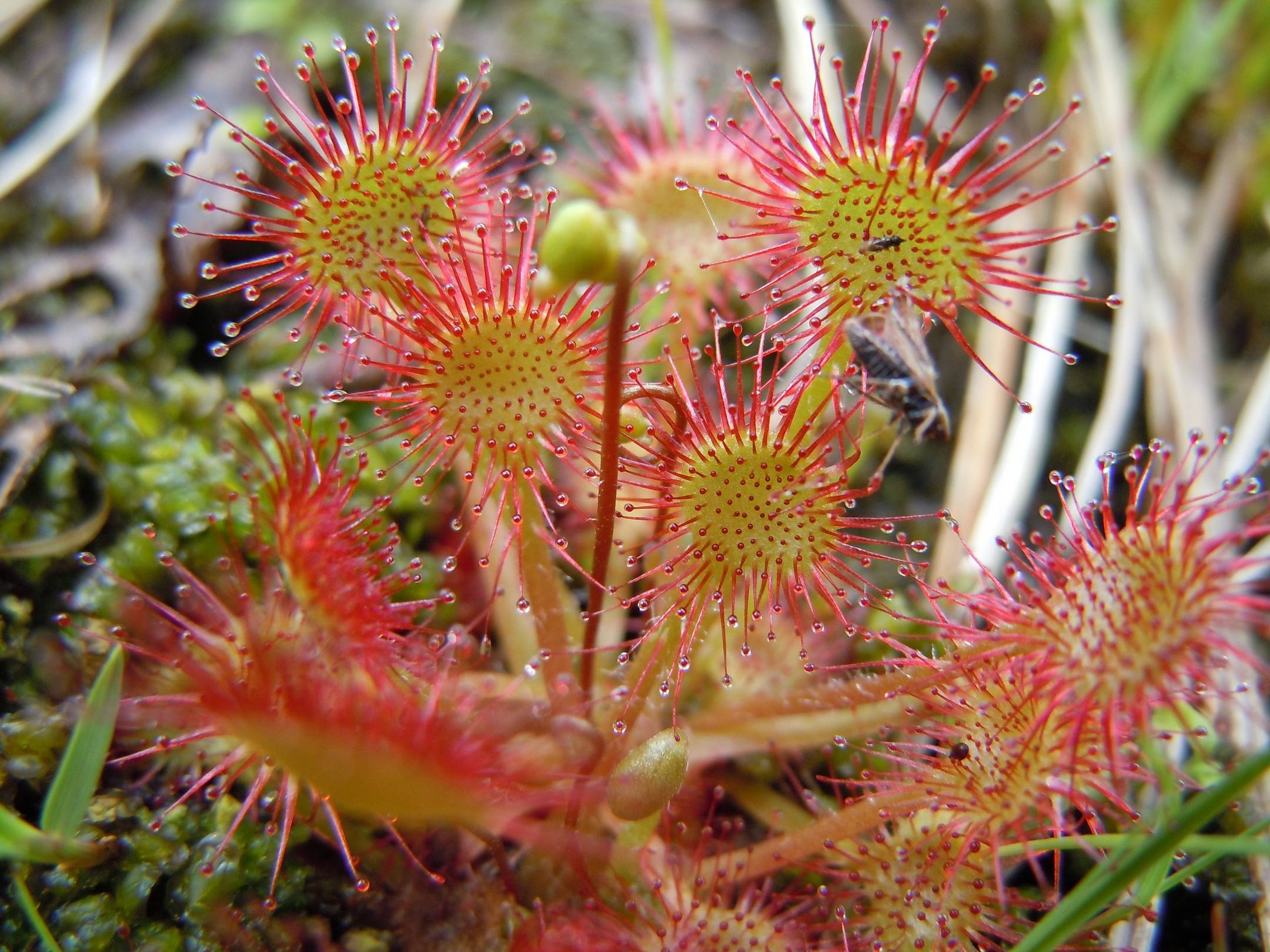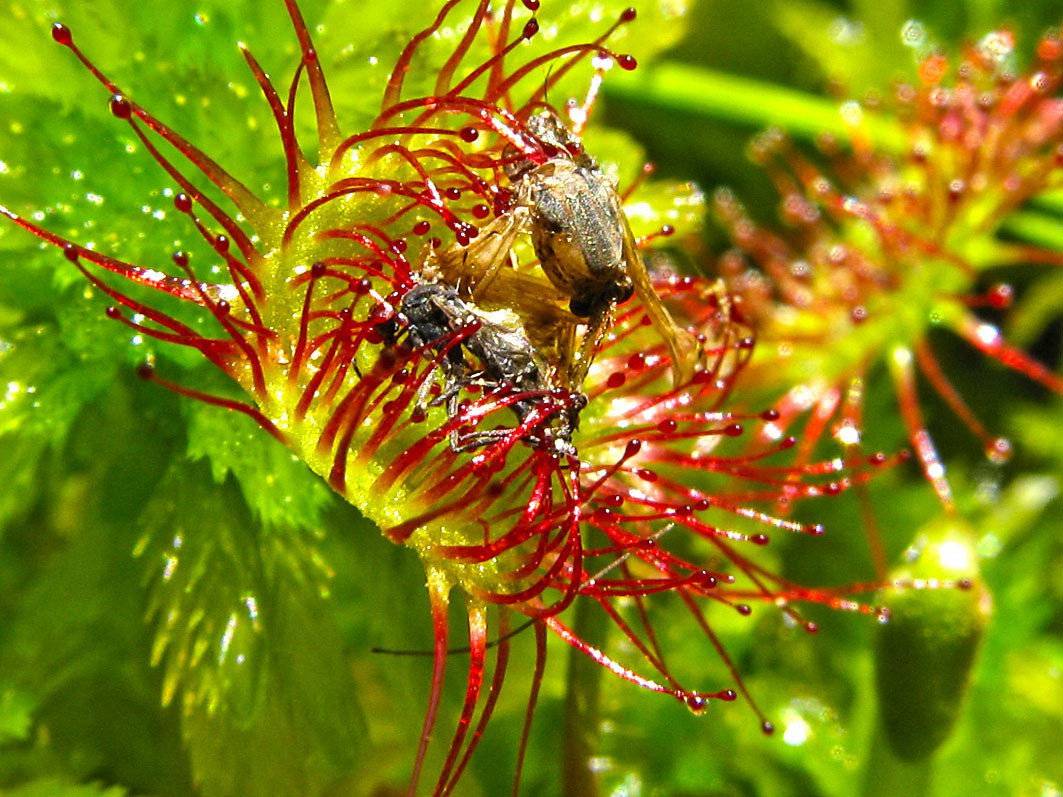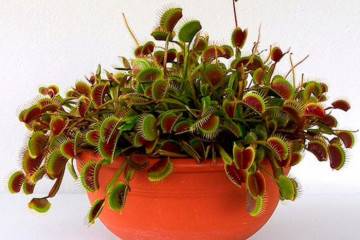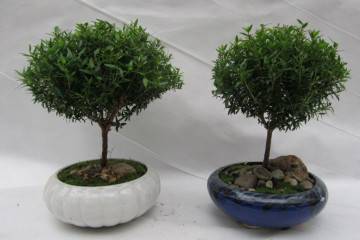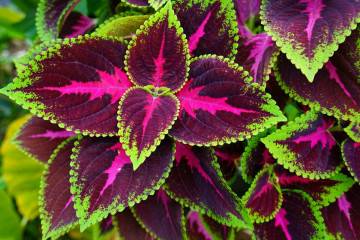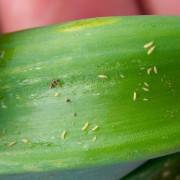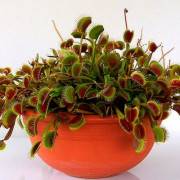Dewdrop - what is this predatory plant
Content:
Everyone knows firsthand that appearance is sometimes deceiving. This applies not only to people, but also to plants. In the magnificent kingdom of Flora, there are specimens that delight in their appearance, but at the same time are insectivorous predators. The sundew rightfully claims the title of the brightest and most expressive beauty among predator plants.
What is this plant where it grows in the wild
Sundew is a rare predatory herb. In the wild, the habitat is poor boggy soils.
The flower feeds on insects. To catch prey on the leaves of the plant, small droplets of a sticky substance are present, to which the victim sticks. Then, feeling the vibration, the sundew rolls up and wraps the insect.
Sundew attracts insects with its aroma. The process of food absorption takes several days on average.
Description
Dewdrop is a perennial plant. Currently, there are more than 100 varieties of this flower. There are many short reviews of this plant on the Internet today.
Its stem is small, it consists of flower arrows and a leaf rosette pressed to the ground. The leaves are miniature, on their upper side there are glands with a viscous liquid.
The root system of the plant, despite the fact that it is well developed, is weak. All year round, only subtropical flower species grow, and in areas with a temperate climate, the sundew hibernates under the snow, plunging into peace.
Application for medical and economic purposes
Despite the fact that the sundew is a predator plant, it contains a large amount of substances that have a positive effect on the human body.
The main active ingredient of all preparations based on sundew is plumbagin. It is used in the manufacture of medicines for the treatment of the liver and has antifungal and antibacterial effects.
Also, sundew preparations have an effect:
- antispasmodic;
- expectorant;
- antiseptic;
- antipyretic;
- diuretic.
In folk medicine, the plant is used for the preparation of alcoholic tinctures that relieve whooping cough, bronchitis, laryngitis, tuberculosis, tracheitis, bronchial asthma, as well as a debilitating cough. Also used to treat atherosclerosis, headaches, skin conditions, chronic diarrhea and dysentery.
In the household, the sundew is used to disinfect the premises and dishes. Especially in those places where a seriously ill person is. Despite its medicinal properties, sundew is not a producer.
Varieties of a predatory flower
Sundew flowers are subdivided into varieties and varieties. They differ from each other in shape and color.
Round-leaved (Drosera rotundifolia)
The flower of this species is the most numerous in the world. The plant feels best in peat bogs.
Leaves are oval in shape, located in close proximity to the roots. Round-leaved sundew blooms with white flowers. This happens in the summer.
After flowering, seed is formed on the plant, which is recommended to be collected in the fall. Dewdrop tolerates frost well.
Spatula (Drosera spatulata)
The flower is distinguished by red spoon-shaped leaves. Their surface is covered with small cilia.
The plant is undemanding in care and growing process, and also has high endurance. It blooms in pink or white flowers.
Cape (Drosera capensis)
Many novice florists are wondering what a home-grown sundew looks like, and which species is considered the most attractive. Cape sundew is recognized as one of the most beautiful varieties.
The flower is distinguished by a short stem with thin linear leaves attached to it, painted in a yellow-green or red-brown hue.
The plant blooms with beautiful flowers. Representatives of this variety are often confused with the alba sundew, which also has an attractive appearance.
How to grow at home, features of caring for a predator
Sundew cultivation and home care are not difficult. The most important thing is to follow certain rules.
Illumination and temperature conditions
Like the wild variety of this plant, the sundew grown at home is very fond of light.
- In the summer, the flower needs at least 12 hours of daylight hours. The most optimal place for a sundew is considered to be a window sill on the east or west side.
- In winter, the flower needs to provide lighting for 8 to 10 hours. The lack of natural light can be replenished with phytolamps.
Where a sundew grows, it is necessary to maintain a moderate temperature. In summer, it should be up to 30 degrees, and in winter up to 15 degrees.
Watering rules and humidity
Common sundew, both in natural conditions and at home, needs moisture. Regardless of the season, the flower needs to be watered abundantly. The frequency depends on the condition of the soil.
Water the marsh sundew should be warm water. This should be done once a week. The flower is very sensitive to the drying out of the soil, therefore it is necessary to monitor its moisture especially carefully.
Top dressing and soil quality
Every experienced florist knows what a sundew is and the fact that a flower can grow completely on any type of soil. When artificially grown, the plant needs to be covered with forest moss, the height of which should not exceed 3 cm.
When growing a flower at home, it is very important to know how to care for a sundew and do it right. Like all existing carnivorous plants, Drosera does not need feeding. The source of food for her is insects. Many even have this flower as a flycatcher.
In the summer, experts recommend exposing the sundew to fresh air so that it can feed on various insects.
Transplant and size of the flower container
The sundew is transplanted as needed. It is not recommended to transplant the flower immediately after purchase. According to the description of the plant, transplanting it is necessary only when the form in which it is grown becomes small.
The most optimal time for a transplant is February and March.
For growing this parasite flower at home, it is best to choose pots that are flat, low, wide with large drainage holes.
Drosera flower propagation methods
Sundew reproduces in three ways. Each florist should choose the most suitable one, depending on individual preferences.
Children
Often, layers appear on the outlets, the so-called babies. To plant them, you should carefully separate the layers from the mother plant.
They are planted in separate pots and covered with bags.
Seeds
The easiest way to reproduce a sundew is to plant seeds. They are very small and powder-like. The seeds are harvested one month after the end of flowering. It was during this period that boxes with the necessary contents appear on the plant.
The planting material is sown on the surface of the soil and covered with a bag. Keeping the seeds is required in a very humid, warm and bright room. The first shoots appear after a couple of months. Germination time depends on the type of sundew.
For reproduction in this way, soil is best suited, which is obtained by mixing sand and peat, which are taken in equal quantities.
Rooting leaves
For such reproduction, it is necessary to carefully cut off a healthy leaf and root it. After that, the soil must be thoroughly watered. The leaves take root quickly and easily.
Growing problems, diseases and pests
Like all plants, sundew is susceptible to diseases, despite the fact that it has excellent immunity. If leaf wilting is seen on a flower, then this should be a cause of concern for the owner of the plant.
Despite the fact that the sundew is classified as a predator, aphids do not fall into its trap, but prefers to dwell on the underside of the leaves. The pest appears as a result of low humidity. To eliminate pests, flower growers recommend using insecticides.
Dewdrop is considered to be one of the most extraordinary plants. It is very easy to distinguish it among flowers and herbs. The quality and appearance directly depend on the growing conditions. The plant must be carefully looked after and then it will thank its owner with an attractive appearance and unique properties.
